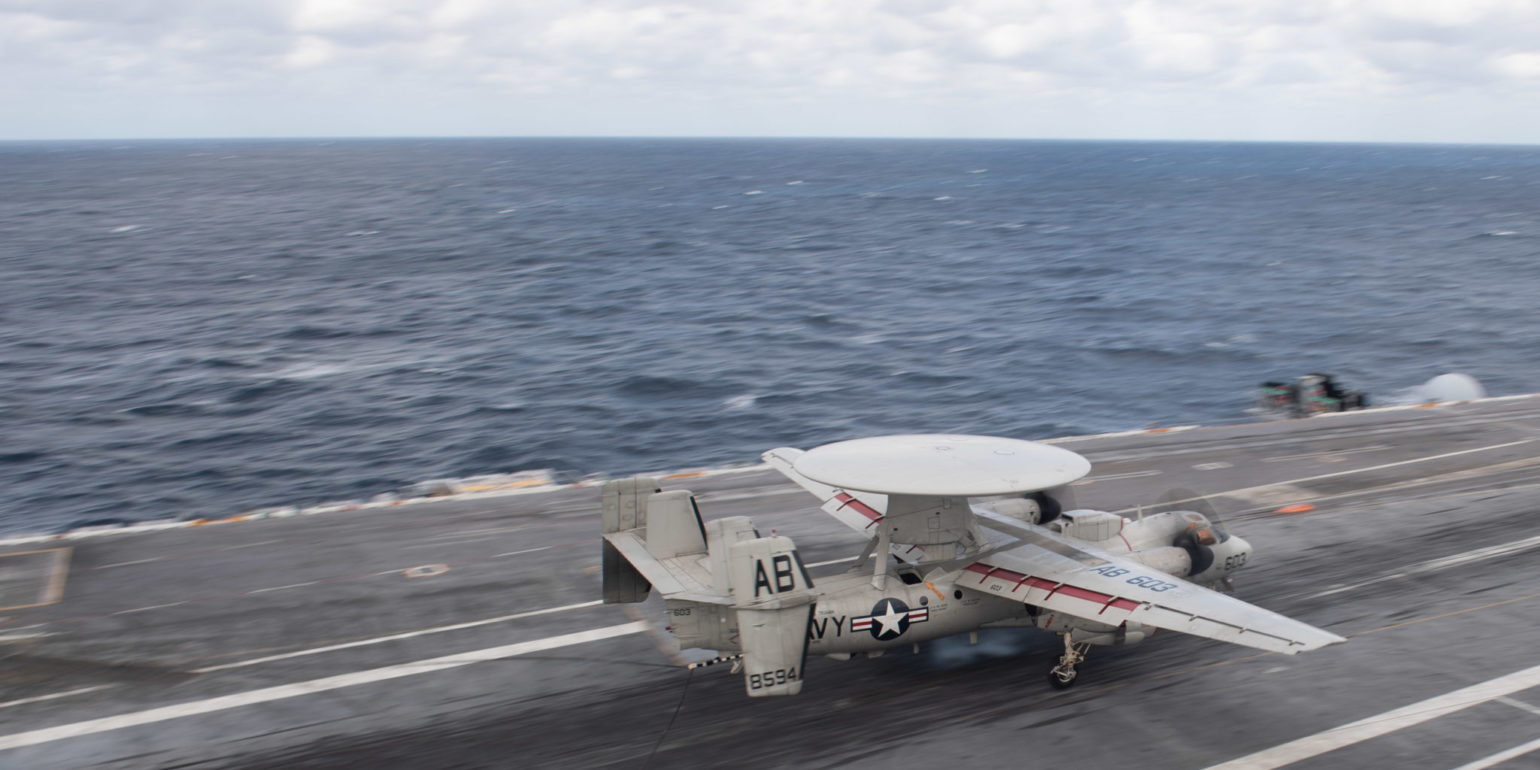| Role | Airborne early warning and control (AEW&C) and command and control battle management (C2BM) |
| Targets | Aircraft, cruise missiles |
| Operators | U.S. Navy, Japan Air Self Defense Force, French Navy, Mexican Navy, Egyptian Air Force, Taiwan Air Force, Singapore Air Force (former), Israeli Air Force (former) |
| Range | ~1,700 mi |
| Sensors | Lockheed Martin-produced AN/APY-9 radar |
| Producer | Northrop Grumman, with Lockheed Martin as subcontractor for electronic sensors and systems |
Overview:
The Northrop Grumman-produced E-2C Hawkeye, and its next-generation variant, the E-2D Advanced Hawkeye, is an airborne early warning aircraft, operated by the United States Navy. Similar to the E-3 Sentry and the E-7 Wedgetail, the Hawkeye is capable of tracking threats, including cruise missiles and hostile aircraft, and transmitting tracking data to command centers and friendly aircraft. Supported by a Lockheed Martin-produced AN/APY-9 Airborne Early Warning Radar, the E-2D can track targets at ranges greater than 550 kilometers. The E-2D is the first aircraft able to detect a mobile ground-launched cruise missile, and is designed to be compatible for carrier operations, allowing it to provide long-range detection of incoming missiles and aircraft.
The E-2 has numerous international operators. Israel was the first foreign nation to order the Hawkeye, in 1981. Since then, Egypt, France, Japan, Singapore and Taiwan have all purchased the system from the U.S., and Mexico acquired the Israeli Air Force’s aircraft.
Current Developments:
France signed an agreement in January 2021 with the U.S. Navy to acquire 3 E-2D tails, replacing their E-2C aircraft. The aircraft is scheduled to be delivered by 2028.
Strategic Implications:
The carrier-capable E-2D plays a central role in the Navy’s Naval Integrated Fire Control- Counter Air (NIFC-CA) concept, which links together every element of a carrier strike group. From an offensive perspective, the Advanced Hawkeye can gather intelligence, surveillance, and reconnaissance (ISR) information from platforms such as the F-35C, and transmit the targeting data to fighters such as F-18s to conduct strikes from standoff range.
The E-2D’s NIFC-CA role also facilitates Cooperative Engagement Capabilities (CEC) for air and missile defense, most notably Aegis. This capability enhances protection of deployed sea-based U.S. assets from air and missile threats.
Timeline:
1956: The United States Navy creates a requirement for an airborne early warning system.
March 1957: Northrop Grumman is selected for the AEW system requirement.
October 1960: The E-2 prototype takes its first test flight.
January 1964: The E-2A enters service with the Navy.
January 1971: Testing begins for the upgraded E-2C platform.
1973: The first Navy E-2C Hawkeye becomes operational.
August 2007: The E-2D (Advanced Hawkeye)’s first flight.
July 2010: The U.S. Navy receives its first E-2D aircraft.
February 2011: The E-2D makes its first carrier landing, on the USS Harry Truman.
October 2014: The E-2D achieves Initial Operational Capability (IOC).
References:
The Aegis Warship: Joint Force Linchpin for IAMD and Access Control
Air and Missile Defense at a Crossroads
We CAN Tie Army, Navy Missile Defense Networks: Navy Experts
Inside the Navy’s Next Air War – USNI News
Egypt Orders Sixth E-2C Hawkeye From Northrop Grumman | Northrop Grumman
E-2C / D Hawkeye Airborne Early Warning Aircraft, USA

